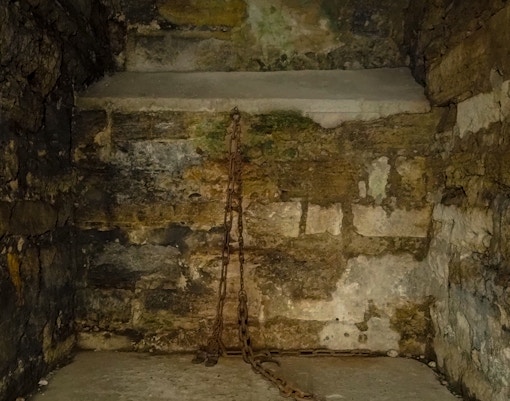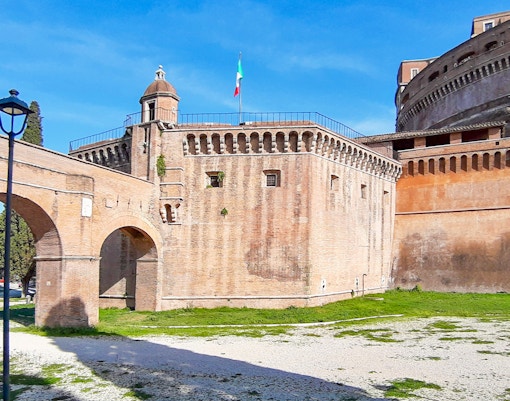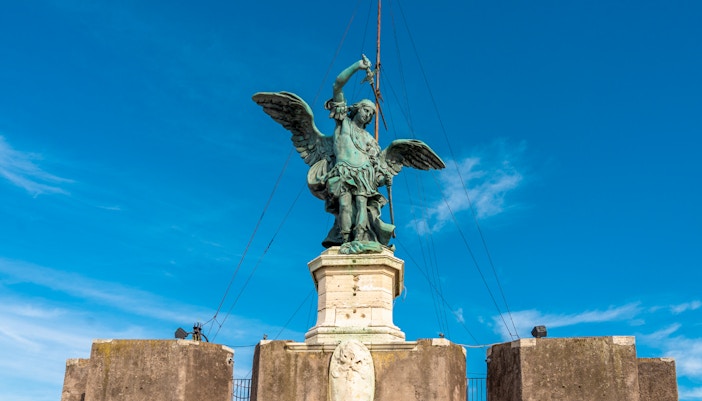At the heart of the structure lies the original Roman core—a massive circular chamber that once held the ashes of Emperor Hadrian and his successors. Though the urns are long gone, the sheer scale and architectural genius of the burial chamber remain awe-inspiring.
What's to see at Castel Sant'Angelo?

Mausoleum of Hadrian

The prison cells
Dark, narrow, and unsettling, these stone rooms were once used to hold political enemies and heretics. Allegedly, figures like Giordano Bruno and Benvenuto Cellini were imprisoned here. Look out for graffiti and carvings left by former inmates.

The papal apartments
High above the old tomb lie elegant rooms used by popes in times of crisis. These chambers, especially the Sala Paolina, are richly decorated with Renaissance frescoes, papal emblems, and ornate furniture. Don’t miss the library, papal bedroom, and the throne room.

The military museum
Throughout the upper levels and hallways, you’ll find collections of armor, weapons, and cannons used in the castle’s defense. These exhibits highlight the building’s transformation into a military stronghold during the Middle Ages.

The Terrazza dell’Angelo
The crown jewel of your visit—the rooftop terrace offers 360° panoramic views of Rome, including a perfect view of St. Peter’s Basilica. It’s named after the towering bronze statue of Archangel Michael, said to have sheathed his sword here as a sign of the plague’s end in 590 AD.

Passetto di Borgo
This secret elevated corridor connects the castle to the Vatican City. It was used by popes as an escape route during times of siege. While not always accessible, some guided tours include rare access to this historic passage.






